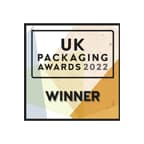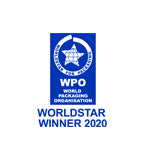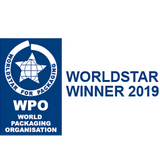- How did you get into the industry?
I left college at 16 and went down the vocational training route, starting my career as a Print Apprentice within Leicestershire County Council's in-house print unit while continuing my studies at the Leicester School of Printing. This led to a permanent position as a print technician. My ability and willingness to take on new skills meant I successfully performed many roles across the print process, from planner/platemaker to print finishing supervisor to graphic design.
- What inspired you to get into design?
The creative side of things has always been of interest to me - though I didn’t leave school with loads of qualifications, my two O-Levels were in art and graphic design. With the breadth of experience I had gained early in my career, I knew that design was the area that I wanted to focus on. So, when I left Leicestershire County Council I took a job as part of a CAD team, designing packaging for many major pharmaceutical companies worldwide. Working in the same room as the constructional designers, my interest was piqued and I took on as many little jobs as I could to gain experience in constructional design. I showed an aptitude for it and the rest was history – within a few years I moved into a full-time constructional design role.Later, a colleague and I set up a design agency of our own, Pillbox Design, serving a number of markets including pharmaceutical, healthcare and food, which I’m happy to say is still going strong today. Although we started predominantly working in constructional design, our clients’ needs evolved to require mainly graphic design so I decided to move to BoxMart to personally re-focus on constructional design.
- What are your favourite elements of your job?
Creating truly bespoke solutions for a really wide variety of clients across many different industries means that no two days are the same! I get to work with the clients to explore which solution is going to be right for them and their product, both in terms of aesthetics and functionality, resulting in something truly unique each time.
- What are the biggest challenges?
Designing bespoke solutions, while incredibly fun and interesting, often comes with its own unique challenges. As a designer, it’s vital to balance creativity with function and make sure that you’re designing something that can actually be made and will do the job you need it to. Sometimes it can be easy to forget about this when designing, so it’s important to be able to visualise what the product will look like and how it will function when fully made up and in 3D.
- What’s your favourite project(s) to have worked on?
There are so many! The Magic Cube we created for Lush was really fun, with interlocking compartments, each with a unique one-way locking tab. The pack could be folded and re-folded to reveal a range of Lush products to the consumer. We had to make sure that the box could hold its shape when folded even when filled with products. It was a really interesting design challenge and I was really pleased with the finished product; it flew off the shelves when it went in store and won several industry awards including a UK Packaging Award and a Starpack Award.
- What’s your favourite thing about working for BoxMart?
It’s fantastic to have the time and freedom to go ‘as crazy as you like’ with creativity to design bespoke, original solutions for our clients. As our designs can be manufactured in a multitude of substrates, we have the option to create in the best material for the job – meaning our designs are not limited by being restricted to certain production materials.
- Do you have any interesting hobbies outside of work?
For many years I’ve played and coached Volleyball! This season is my last before I retire from playing, but I’m going to carry on coaching the women’s team and the junior team. I also like to keep fit outdoors as much as possible by mountain biking and playing golf – you don’t notice you’re exercising if it’s fun!
- And finally, what advice would you give to someone looking to do what you do?
Experience in different areas of printing really helps to inform smart design decisions, so it’s a good idea to get as much knowledge and experience of the production process as possible. It’s really important to be able to visualise what a design will look like when it’s created in three-dimensions, to make sure your designs are feasible and functional. Nothing can replace an aptitude for design but if you have that natural talent you can go far.





